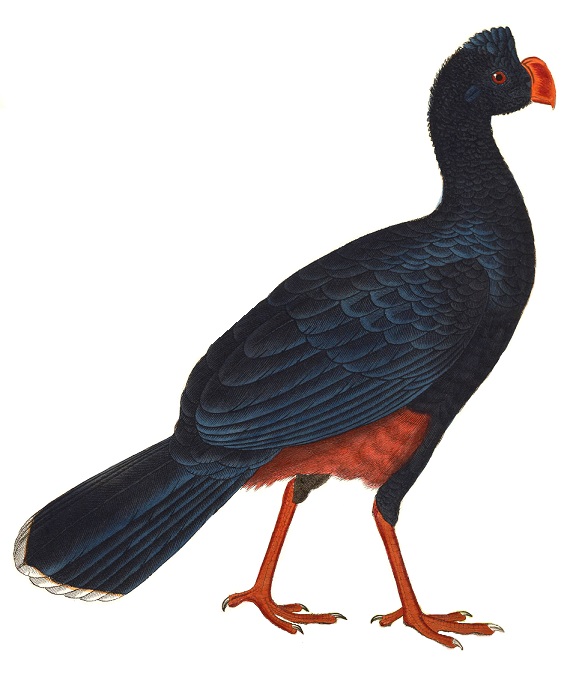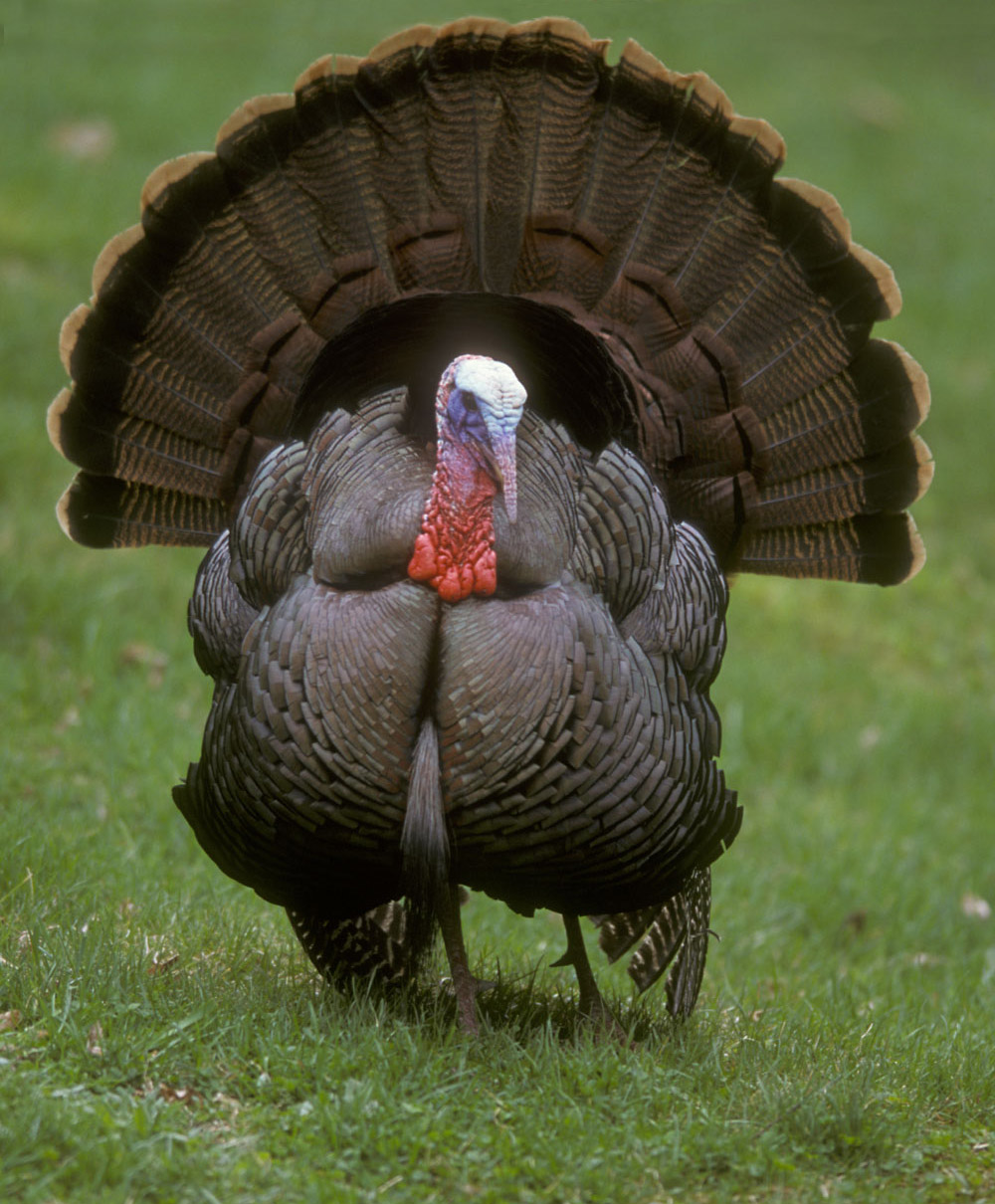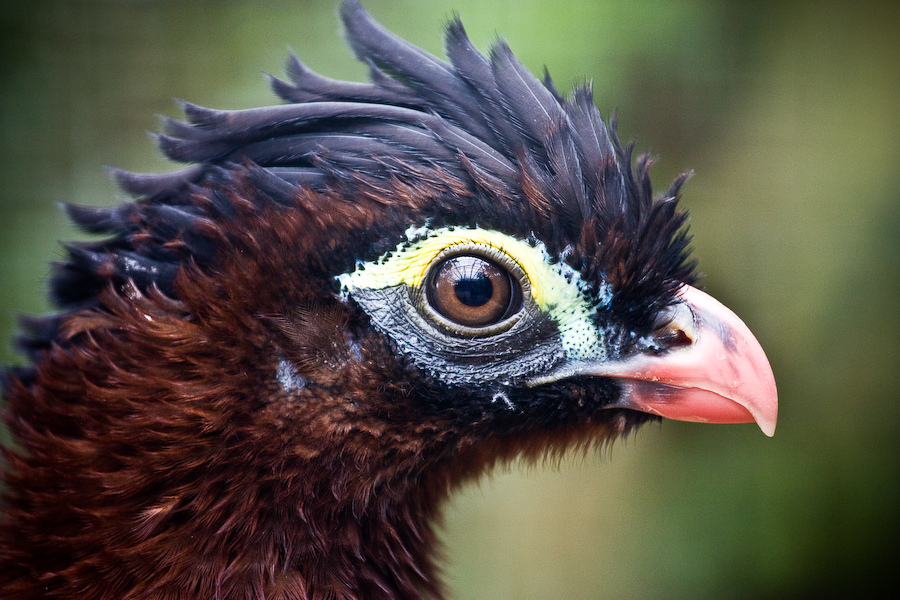|
Cracidae
The chachalacas, guans, and curassows are birds in the Family (biology), family Cracidae. These are species of tropical and subtropical Central America, Central and South America. The range of one species, the plain chachalaca, just reaches southernmost parts of Texas in the United States. Two species, the Trinidad piping guan and the rufous-vented chachalaca occur on the islands of Trinidad and Tobago respectively. Systematics and evolution The family Cracidae was introduced (as Craxia) by the French polymath Constantine Samuel Rafinesque in 1815. The Cracidae are an ancient group that were thought to be related to the Australasian Megapode, mound-builders of family Megapodiidae. The two families they were sometimes united in a distinct order (biology), order, Craciformes, as in Munroe and Sibley's 1993 ''World Checklist of Birds''. However, the group is not monophyletic and more recent phylogenetic studies have found Megapodiidae and Cracidae to be successive Basal (phylogenetic ... [...More Info...] [...Related Items...] OR: [Wikipedia] [Google] [Baidu] |
Galliformes
Galliformes is an order (biology), order of heavy-bodied ground-feeding birds that includes turkey (bird), turkeys, chickens, Old World quail, quail, and other landfowl. Gallinaceous birds, as they are called, are important in their ecosystems as seed dispersers and predators, and are often reared by humans for their meat and eggs, or hunted as game birds. The order contains about 290 species, inhabiting every continent except Antarctica, and divided into five Family (biology), families: Phasianidae (including chicken, quail, partridges, pheasants, turkeys, peafowl (peacocks) and grouse), Odontophoridae (New World quail), Numididae (guinea fowl), Cracidae (including chachalacas and curassows), and Megapodiidae (incubator birds like malleefowl and Brushturkey, brush-turkeys). They adapt to most environments except for innermost deserts and perpetual ice. Many gallinaceous species are skilled runners and escape predators by running rather than flying. Males of most species a ... [...More Info...] [...Related Items...] OR: [Wikipedia] [Google] [Baidu] |
Cracinae
Curassows are one of the three major groups of cracid birds. They comprise the largest-bodied species of the cracid family. Three of the four genera are restricted to tropical South America; a single species of ''Crax'' ranges north to Mexico. They form a distinct clade which is usually classified as the subfamily Cracinae. Evolution In line with the other 3 main lineages of cracids ( chachalacas, true guans, and the horned guan), mt and nDNA sequence data indicates that the curassows diverged from their closest living relatives (probably the guans) at some time during the Oligocene, or c.35–20 mya (Pereira ''et al.'' 2002). This data must be considered preliminary until corroborated by material (e.g. fossil) evidence however. What appears certain from analysis of the molecular data, calibrated against geological events that would have induced speciation, is that there are 2 major lineages of curassows: one containing only ''Crax'', and another made up of ''Mitu'' and ' ... [...More Info...] [...Related Items...] OR: [Wikipedia] [Google] [Baidu] |
Penelopinae
The guans are a number of bird genera which make up the largest group in the family Cracidae. They are found mainly in northern South America, southern Central America, and a few adjacent Caribbean islands. There is also the peculiar horned guan (''Oreophasis derbianus'') which is not a true guan, but a very distinct and ancient cracid with no close living relatives (Pereira ''et al.'' 2002). Systematics and evolution The evolution of the group is fairly well resolved due to comprehensive analyses of morphology, biogeography, and mt and nDNA sequences (Pereira ''et al.'' 2002, Grau ''et al.'' 2005). The position of ''Penelopina'' and ''Chamaepetes'' - peculiar genera of which the former, uniquely among guans and more in line with curassows, shows pronounced sexual dimorphism - relative to each other is not determinable with certainty at present, but all evidence suggests that they are the basalmost guans. Their distribution is fairly far northwards, with 2 of their 3 species ... [...More Info...] [...Related Items...] OR: [Wikipedia] [Google] [Baidu] |
Trinidad Piping Guan
The Trinidad piping guan (''Pipile pipile'') locally known as the pawi, is a bird in the chachalaca, guan and curassow family Cracidae, endemic to the island of Trinidad. It is a large bird, somewhat resembling a turkey in appearance, and research has shown that its nearest living relative is the blue-throated piping guan from South America. It is a mainly arboreal species feeding mostly on fruit, but also on flowers and leaves. At one time abundant, it has declined in numbers and been extirpated from much of its natural range and the International Union for Conservation of Nature has rated the bird as "critically endangered". Description This is a medium-sized cracid, 60 cm in length, and similar in general appearance to a turkey, with a thin neck and small head. It is mainly black with a purple gloss. The large crest is blackish, edged with white, and there are large white wing patches. The bare face and wattle are blue, and the legs are red. The Trinidad piping guan' ... [...More Info...] [...Related Items...] OR: [Wikipedia] [Google] [Baidu] |
Odontophoridae
The New World quail are small birds, that despite their similar appearance and habits to the Old World quail, belong to a different family known as the Odontophoridae. In contrast, the Old World quail are in the Phasianidae family, sharing only a remote phylogenetic connection with their New World counterparts through their mutual classification within the Phasianoidea superfamily. The geographical range of the New World quail extends from Canada to southern Brazil, and two species, the California quail and the bobwhite quail, have been successfully introduced to New Zealand. The stone partridge and Nahan's partridge, both found in Africa, seem to belong to the family. Species are found across a variety of habitats from tropical rainforest to deserts, although few species are capable of surviving at very low temperatures. There are 34 species divided into 10 genera. The legs of most New World quails are short but powerful, with some species having very thick legs for digging ... [...More Info...] [...Related Items...] OR: [Wikipedia] [Google] [Baidu] |
Rufous-vented Chachalaca
The rufous-vented chachalaca (''Ortalis ruficauda'') is a member of an ancient group of birds of the family Cracidae, which are related to the Australasian mound builders. It inhabits northeast Colombia and northern Venezuela where it is called guacharaca, and the island of Tobago in Trinidad and Tobago where it is known as the cocrico and is one of the country's two national birds (being featured on the country's coat of arms). It is also found on Bequia and Union Island in the Grenadines where it may have been introduced. Habitat The rufous-vented chachalaca is a largely arboreal species found in forest and woodland, but it is also found in more open dry scrubby areas. This combined with relatively low hunting pressure, make it far less vulnerable than larger members of the family, notably curassows. Description These are medium-sized birds, similar in general appearance to turkeys, with small heads, long strong legs and a long broad tail. They are typically 53–58 ... [...More Info...] [...Related Items...] OR: [Wikipedia] [Google] [Baidu] |
Megapodiidae
The megapodes, also known as incubator birds or mound-builders, are stocky, medium-large, chicken-like birds with small heads and large feet in the family Megapodiidae. Their name literally means "large foot" and is a reference to the heavy legs and feet typical of these terrestrial birds. All are browsers, and all except the malleefowl occupy wooded habitats. Most are brown or black in color. Megapodes are superprecocial, hatching from their eggs in the most mature condition of any bird. They hatch with open eyes, bodily coordination and strength, full wing feathers, and downy body feathers, and are able to run, pursue prey and, in some species, fly on the day they hatch. Etymology From the Greek ( = ''great'') and , ( = ''foot''). Description Megapodes are medium-sized to large terrestrial birds with large legs and feet with sharp claws. Megapodes are of three kinds: scrub fowl, brush turkeys, and mallee fowl or lowan. The largest members of the clade are the species of '' ... [...More Info...] [...Related Items...] OR: [Wikipedia] [Google] [Baidu] |
Bird
Birds are a group of warm-blooded vertebrates constituting the class (biology), class Aves (), characterised by feathers, toothless beaked jaws, the Oviparity, laying of Eggshell, hard-shelled eggs, a high Metabolism, metabolic rate, a four-chambered heart, and a strong yet lightweight Bird skeleton, skeleton. Birds live worldwide and range in size from the bee hummingbird to the common ostrich. There are over 11,000 living species and they are split into 44 Order (biology), orders. More than half are passerine or "perching" birds. Birds have Bird wing, wings whose development varies according to species; the only known groups without wings are the extinct moa and elephant birds. Wings, which are modified forelimbs, gave birds the ability to fly, although further evolution has led to the Flightless bird, loss of flight in some birds, including ratites, penguins, and diverse endemism, endemic island species. The digestive and respiratory systems of birds are also uniquely a ... [...More Info...] [...Related Items...] OR: [Wikipedia] [Google] [Baidu] |
Megapode
The megapodes, also known as incubator birds or mound-builders, are stocky, medium-large, chicken-like birds with small heads and large feet in the family Megapodiidae. Their name literally means "large foot" and is a reference to the heavy legs and feet typical of these terrestrial birds. All are browsers, and all except the malleefowl occupy wooded habitats. Most are brown or black in color. Megapodes are superprecocial, hatching from their eggs in the most mature condition of any bird. They hatch with open eyes, bodily coordination and strength, full wing feathers, and downy body feathers, and are able to run, pursue prey and, in some species, fly on the day they hatch. Etymology From the Greek ( = ''great'') and , ( = ''foot''). Description Megapodes are medium-sized to large terrestrial birds with large legs and feet with sharp claws. Megapodes are of three kinds: scrub fowl, brush turkeys, and mallee fowl or lowan. The largest members of the clade are the species of ... [...More Info...] [...Related Items...] OR: [Wikipedia] [Google] [Baidu] |
Yellow-knobbed Curassow
The yellow-knobbed curassow (''Crax daubentoni'') is a species of bird in the family Cracidae, the chachalacas, guans, and curassows. It is found in Colombia and Venezuela. Taxonomy and systematics The yellow-knobbed curassow was formerly classified as a subspecies of blue-billed curassow (''Crax alberti''). It is monotypic. A few subspecies previously proposed for it were determined to be hybrids or aberrant individuals and so were not adopted.del Hoyo, J. and G. M. Kirwan (2020). Yellow-knobbed Curassow (''Crax daubentoni''), version 1.0. In Birds of the World (J. del Hoyo, A. Elliott, J. Sargatal, D. A. Christie, and E. de Juana, Editors). Cornell Lab of Ornithology, Ithaca, NY, USA. https://doi.org/10.2173/bow.yekcur1.01 retrieved October 1, 2021 Description The yellow-knobbed curassow is long. Males usually weigh between but one weighed only . A female weighed . The male is the only curassow with a knobbed yellow cere and wattle. Males and females are mostly black w ... [...More Info...] [...Related Items...] OR: [Wikipedia] [Google] [Baidu] |
Plain Chachalaca
The plain chachalaca (''Ortalis vetula'') is a large bird in the chachalaca, guan and curassow family Cracidae. It breeds in tropical and subtropical environments from mezquital thickets in the Rio Grande Valley in southernmost Texas, United States to northernmost Costa Rica. In Central America, this species occurs in the Pacific lowlands from Chiapas, Mexico to northern Nicaragua and as a separate population in Costa Rica, where its range is separated by a short distance, as a disjunct population. This species frequents dry and moist forests, especially where interspersed with scrub and savanna. Usually found in groups of up to 15 birds, the plain chachalaca is furtive and wary and prefers to escape from danger by running swiftly on the ground or leaping and gliding through brushy tangles. The plain chachalaca feeds in trees or on the ground on fruit (figs, palms, Sapotaceae), seeds, leaves, and flowers. It is sometimes a pest of crops such as tomatoes and cucumbers. The ... [...More Info...] [...Related Items...] OR: [Wikipedia] [Google] [Baidu] |
Numididae
Guinea fowl () (or guineahen) are birds of the family Numididae in the order Galliformes. They are endemic to Africa and rank among the oldest of the gallinaceous birds. Phylogenetically, they branched off from the core Galliformes after the Cracidae (chachalacas, guans, and curassows) and before the Odontophoridae (New World quail). An Eocene fossil lineage '' Telecrex'' has been associated with guinea fowl; ''Telecrex'' inhabited Mongolia, and may have given rise to the oldest of the true phasianids, such as blood pheasants and eared pheasants, which evolved into high-altitude, montane-adapted species with the rise of the Tibetan Plateau. While modern guinea fowl species are endemic to Africa, the helmeted guinea fowl has been introduced as a domesticated bird widely elsewhere. Taxonomy and systematics This is a list of guinea fowl species, presented in taxonomic order. Phylogeny Cladogram based on a study by De Chen and collaborators published in 2021. Description ... [...More Info...] [...Related Items...] OR: [Wikipedia] [Google] [Baidu] |







